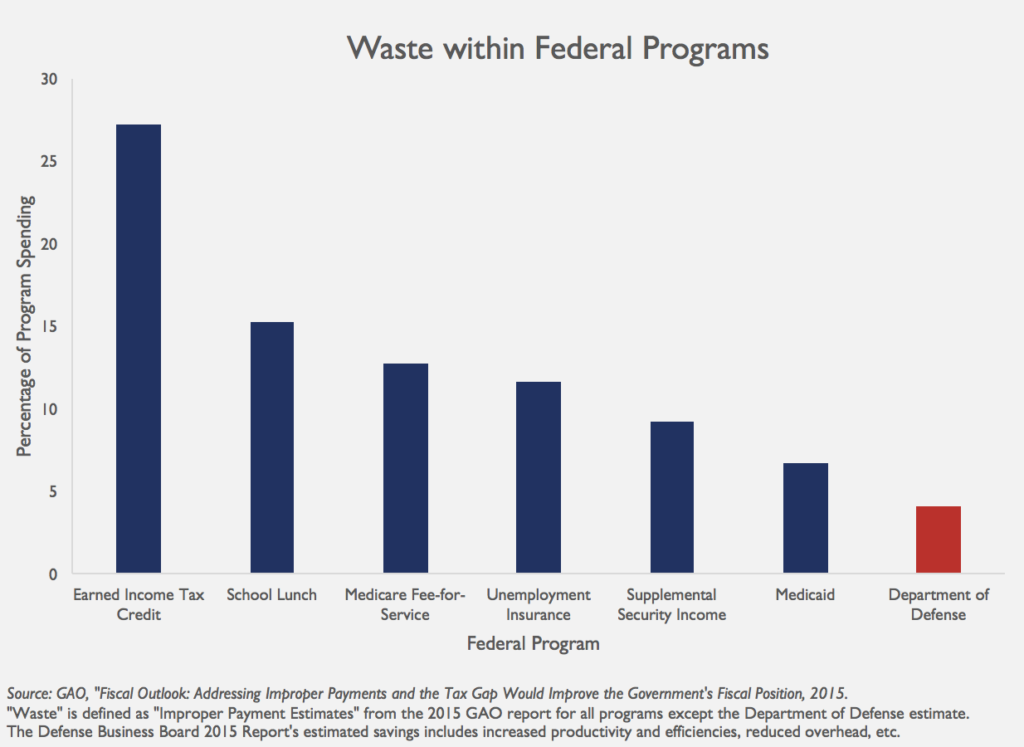Insight
December 13, 2016
$125 Billion of Pentagon Waste: The Rest of the Story
The Washington Post recently reported on a Pentagon study exposing $125 billion in bureaucratic waste at the Department of Defense (DOD). The headline is attention-grabbing, and it should be—taxpayers should be alarmed at such a massive amount of wasteful federal spending. And for a Department that has consistently claimed to be underfunded in the aftermath of sequestration, that amount of waste would call into question the legitimacy of the DOD’s broader budget problems. For those reasons, it is worth digging deeper and examining what exactly this study revealed.
First, it is important to note that the $125 billion in estimated savings are projected to be realized over five years. At an average of $25 billion per year, these savings work out to around four percent of the total Pentagon budget. (The DOD budget for the current Fiscal Year is $587 billion.) The study examined business operations, which account for nearly a quarter of the Pentagon’s budget, to find these potential savings through streamlining bureaucracy.
Second, it is worth considering how the DOD’s four percent administrative waste compares to other federal spending. While departments and agencies typically do not commission publicly available studies on inefficiency within their own budgets, the Government Accountability Office issued a report last year estimating improper payments within several federal social programs. The study revealed that this waste accounted for around seven percent of Medicaid payments, 13 percent of Medicare Fee-for-Service, and 27 percent of Earned Income Tax Credit outlays.
To be sure, any government program will have some amount of waste. The DOD is the largest organization in the world, and all bureaucracies have inefficiencies. Commissioning a study to review wasteful spending is a commendable first step toward reining in bureaucratic waste. Now the DOD should be held accountable for implementing the study’s recommendations. That said, while efforts to improve efficiency and effectiveness should be encouraged, they should also be understood in the proper context.
The defense budget has been cut by 25 percent in real dollars in the last five years. Military readiness and modernization have taken the brunt of those cuts. While reforming DOD business operations may help fix some of the budget problem, what the military needs is serious reinvestment. The incoming Trump Administration should work with Congress to ensure that the military is properly funded to carry out its missions around the world.











